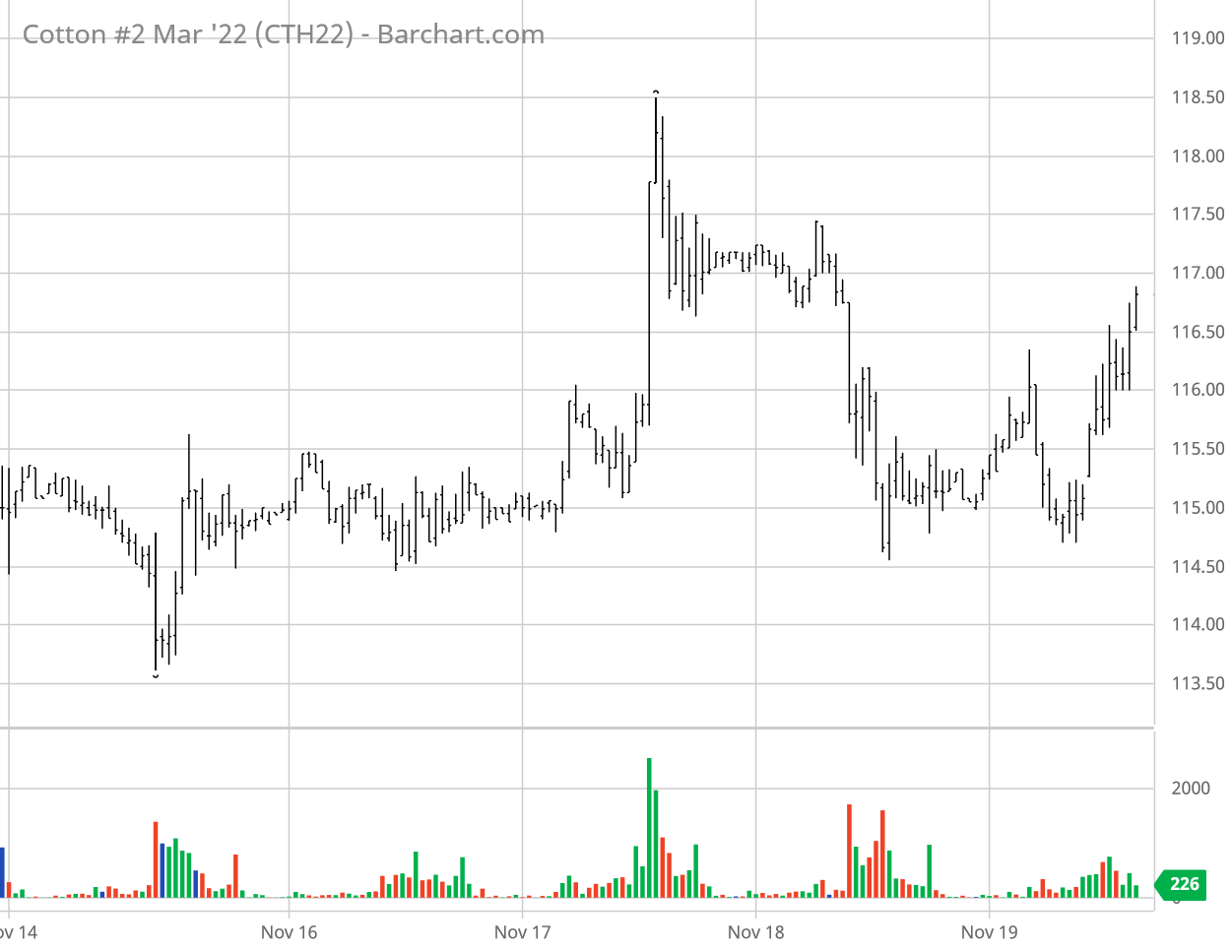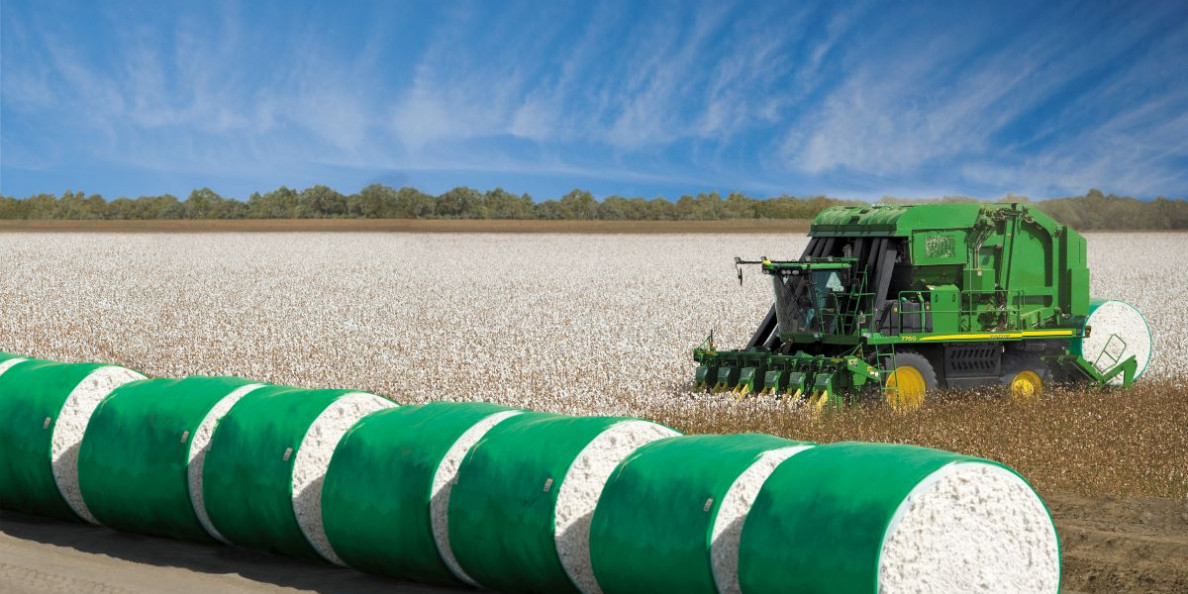For the week ending Friday, November 19, the most active Mar’22 ICE cotton futures contract traded in a narrow sideways range around 115 cents per pound before shooting up Wednesday to a contract high of 118.50. Prices then stair-stepped back to 115 cents on Thursday, and partially recovered at week’s end (see chart above courtesy of Barchart.com). Mar’22 ICE cotton futures settled at 116.43 cents per pound on Friday, up one and a third cents on the day.
Daily open interest in ICE cotton futures fluctuated across the week, in relatively high volume. The regular Tuesday snapshot (through November 16) showed roughly a 1,900 contract increase in the net long position of hedge funds, week over week, mostly from new longs. The index fund net long position also increased, by roughly 2,100 contracts, week over week. The latter was more due to excess short covering.

In related markets, CBOT corn trended slightly lower while CBOT soybean KC wheat trended sideways this week. The U.S. dollar index zig-zagged to 16-month highs while stock indices took a modest uptrend across the week. Chinese and world cotton prices gradually climbed across the week.
Cotton-specific fundamental factors this week included unspectacular weekly U.S. cotton export sales, continuing good U.S. cotton condition ratings, and continued good harvest weather. There were also passing rumors about Chinese demand and Indian policy intervention which may have contributed to Thursday’s selling. U.S. cotton certified stock levels shrank to negligible levels.
The movement of ICE cotton futures has implications for potential hedging strategies. The price volatility in 2021 is a reminder why it is risky to hedge by selling futures, and it’s also made some option premiums more expensive. As new crop Jul’22 cotton futures risen in the last few months, a near-the-money 85 call option has increased in value. Between September 23 and November 18, an 85 call option on July’22 rose from 9.45 cents to 26.31 cents per pound. Had it been purchased in the previous months (i.e., back when some new crop was being cash contracted in the mid-80s), the current uptrend clearly illustrates the insurance aspect of call options. In general, a call option represents upside price risk protection, in combination with cash contracting or selling futures. Looking further out, the rising new crop Dec’22 futures contract has resulted in an out-of-the-money 80 cent put option premium declining from fourteen cents in January to 3.34 cents per pound by November 18. If Dec’22 futures keep rising, this and similar put options will become increasing affordable down-side price insurance. That is, once purchased, it will buffer unexpected declines in Dec’22 futures by increasing in value.
For more details and data on Old Crop and New Crop fundamentals, plus other near term influences, follow these links (or the drop-down menus above) to those sub-pages.
Source: cottonmarketing.tamu.edu

